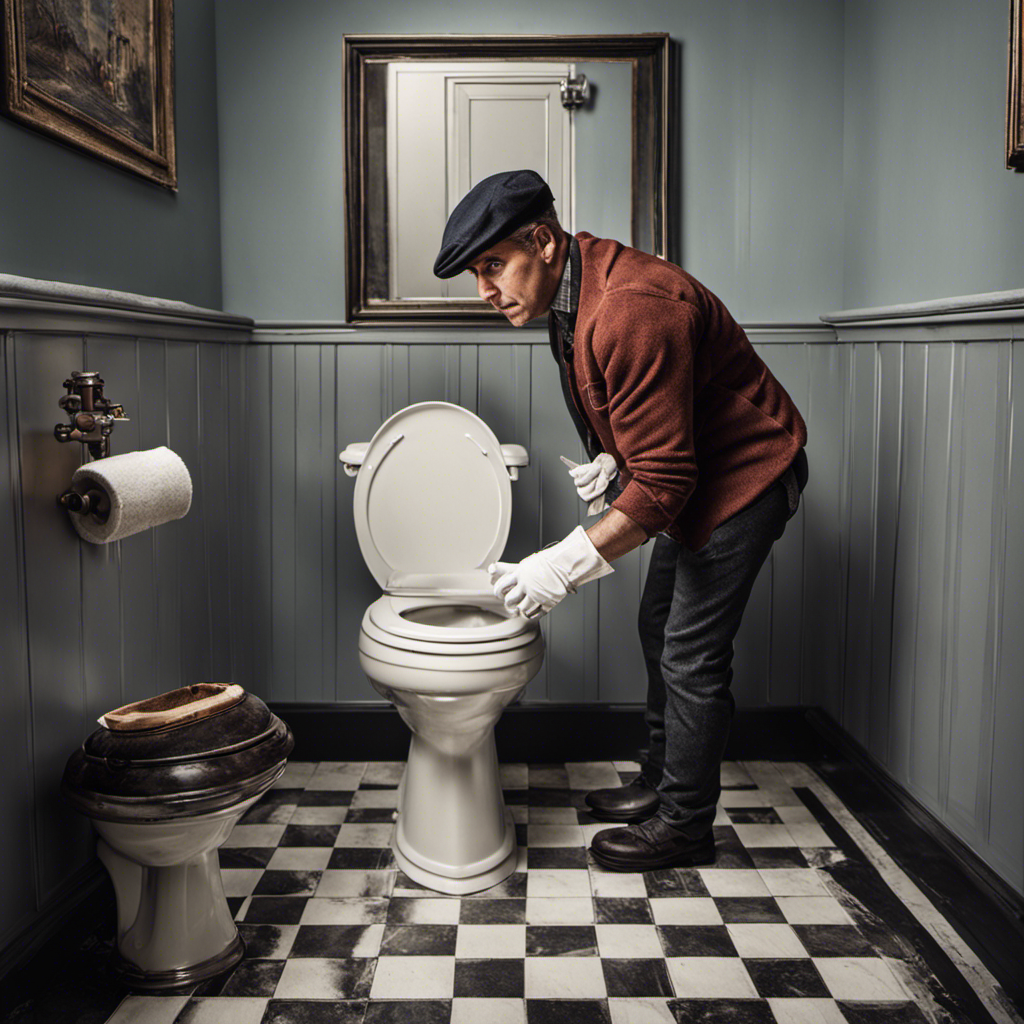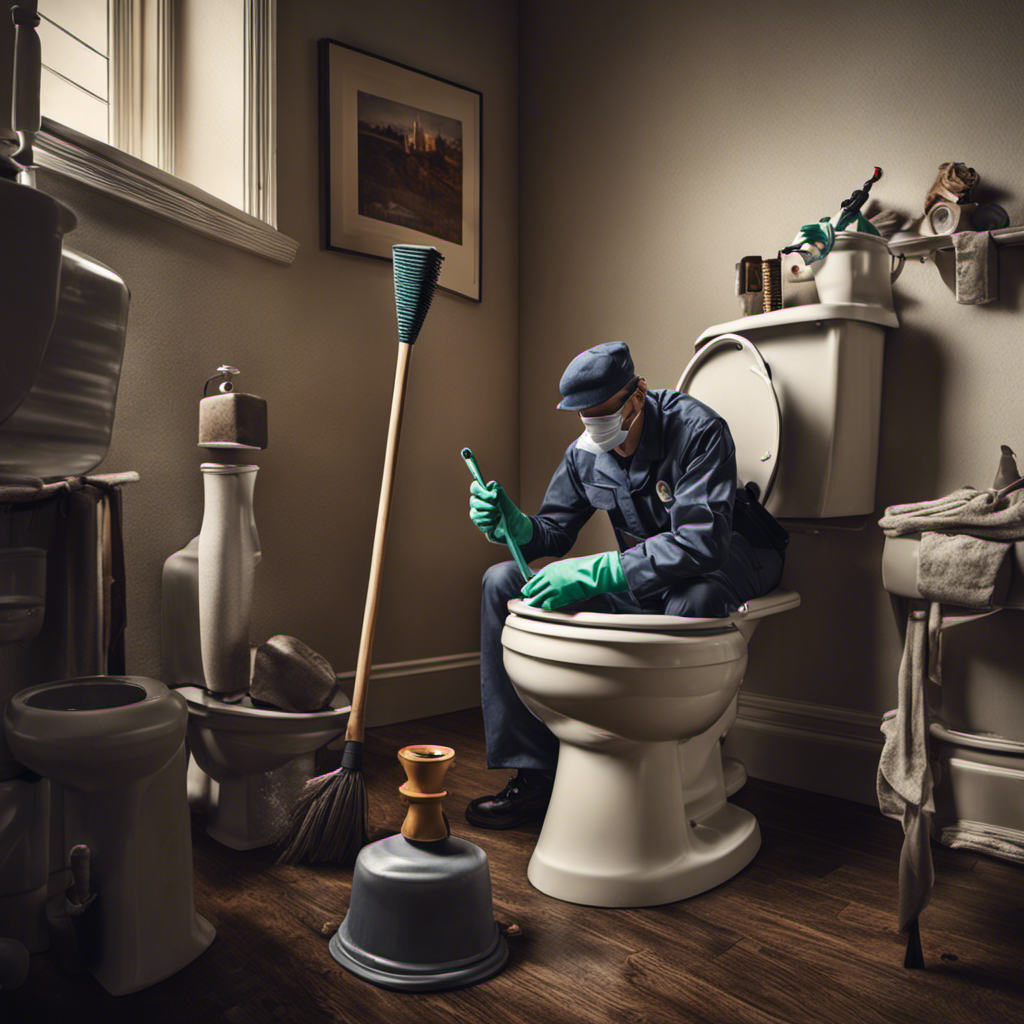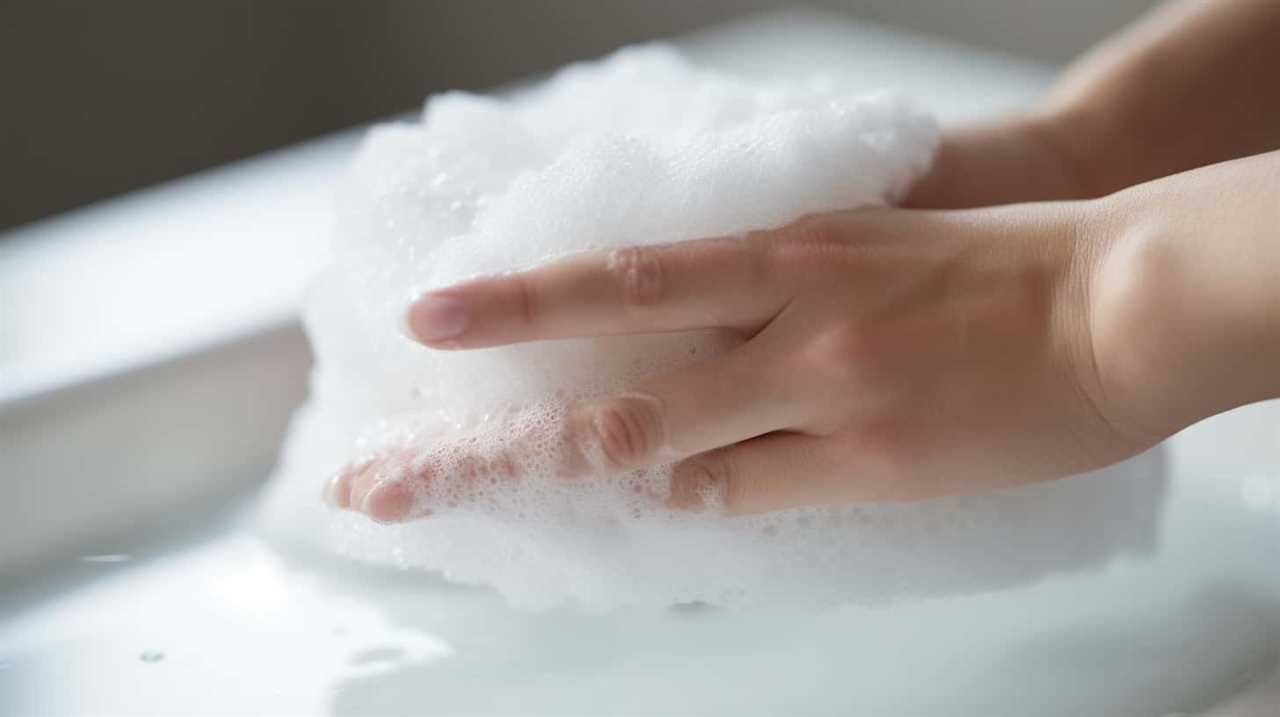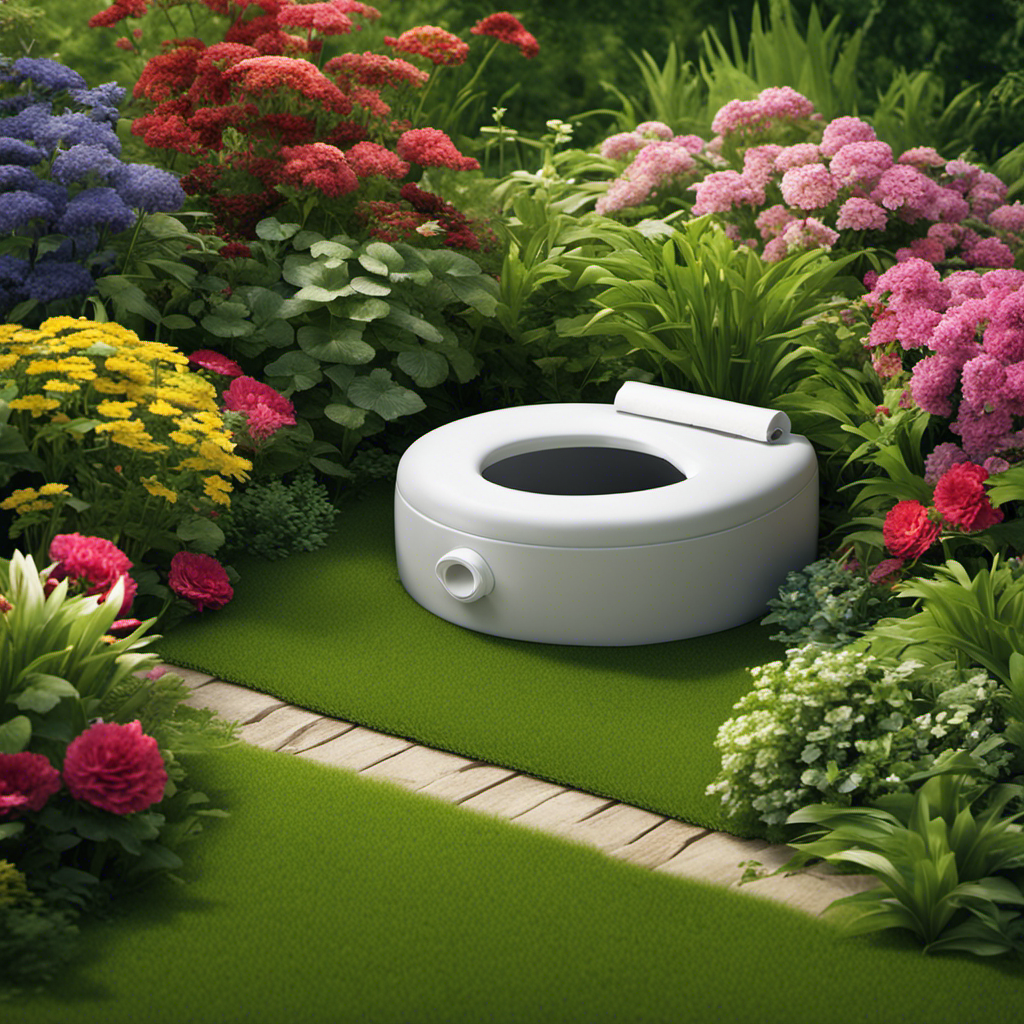Have you ever found yourself in a sticky situation with a clogged toilet? Don’t worry, I’ve got you covered.
In this article, I’ll guide you through the step-by-step process of using a toilet plunger effectively. From selecting the right plunger to troubleshooting common issues, I’ll provide you with all the information you need to become a master of the plunging technique.
So, let’s dive in and tackle those clogs head-on!
Key Takeaways
- Select the right plunger for the type of toilet and clog
- Prepare the toilet by clearing the area and gathering necessary supplies
- Use proper plunging technique, creating a tight seal and applying steady pressure
- Troubleshoot common issues, such as using a plumbing snake for stubborn clogs
Selecting the Right Plunger
To select the right plunger, you’ll want to consider the type of toilet you have and the material of the plunger. Plunger maintenance is essential to ensure optimal performance and longevity.
There are different types of plungers available, each designed for specific purposes. The most common type is the cup plunger, which has a rubber cup attached to a wooden or plastic handle. This type is suitable for unclogging toilets and sinks.
For toilets with an elbow-shaped drain, a flange plunger would be more effective as it has an additional flange at the bottom to create a better seal. Another type is the accordion plunger, which is ideal for clearing tough clogs.
When choosing a plunger, opt for one made of durable materials like rubber or plastic to withstand frequent use. Regularly clean and sanitize your plunger after each use to prevent the spread of germs.
Preparing the Toilet
Before starting, make sure you’ve cleared the area around the toilet to give yourself enough space to work with. It’s important to maintain your toilet bowl to prevent clogs and keep it in good condition.
To do this, regular cleaning is crucial. Start by removing any items or obstacles around the toilet. This will prevent them from falling into the bowl or hindering your movements.
Next, gather the necessary cleaning supplies such as gloves, a toilet brush, and a toilet cleaner. Before applying the cleaner, flush the toilet to wet the sides of the bowl. This will make it easier for the cleaner to adhere to the surface.
Using Proper Plunging Technique
When plunging, it’s important to create a tight seal between the plunger and the toilet bowl. This ensures maximum suction and effectiveness in unclogging the toilet. To achieve this, make sure the plunger’s rubber cup is clean and free from any debris or residue.
Regularly check the condition of the plunger’s handle and replace it if it becomes cracked or damaged. Avoid common mistakes such as using too much force or plunging too quickly, as this can lead to splashing or an ineffective plunge. Instead, apply steady and controlled pressure while maintaining the seal between the plunger and the toilet bowl.
Remember to clean the plunger thoroughly after each use, using warm soapy water, to prevent the spread of bacteria. Regular plunger maintenance will ensure its longevity and effectiveness in future uses.
Troubleshooting Common Issues
If you’re experiencing a clog that won’t budge, try using a plumbing snake to dislodge the blockage.
However, if you find yourself dealing with frequent clogs, it may be a sign of underlying plumbing problems.
Identifying these issues is crucial to prevent future clogs and avoid costly repairs.
One common problem is tree roots infiltrating the pipes, causing blockages and leaks.
In such cases, a professional plumber can use specialized equipment to remove the roots and repair any damage.
Another issue could be outdated or faulty plumbing systems, which may require a complete replacement.
To prevent future clogs, it’s important to take preventive measures like avoiding flushing non-flushable items, using hair catchers in drains, and regular maintenance, such as snaking the drains and inspecting the pipes for any signs of damage.
Cleaning and Storing the Plunger
Cleaning and storing the plunger is important to maintain its functionality and prevent any lingering odors.
To clean the plunger, start by rinsing it with hot water to remove any debris. Next, mix a disinfecting solution of one part bleach and ten parts water in a bucket or sink. Submerge the plunger in the solution and let it soak for at least 15 minutes. Use a brush or sponge to scrub the plunger, paying special attention to the suction cup and handle.
Rinse the plunger thoroughly with hot water and allow it to air dry completely before storing it. To store the plunger, find a clean, dry area where it can stand upright to prevent any mold or mildew growth.
Remember to clean and disinfect the plunger after each use to maintain proper hygiene.
Frequently Asked Questions
Can I Use a Plunger for Sinks and Other Drains, or Is It Only for Toilets?
Yes, you can use a plunger for sinks and other drains, not just toilets. It creates suction to dislodge clogs. For sinks, cover overflow holes, apply plunger, and plunge vigorously. For bathtubs, block the overflow valve before plunging.
How Long Should I Plunge Before Giving up and Trying a Different Method?
When it comes to unclogging a toilet, it’s important to know how long to plunge before considering alternative methods. Patience is key, but if plunging isn’t working, you can try using a toilet auger or calling a plumber for assistance.
Are There Any Safety Precautions I Should Take Before Plunging a Toilet?
Before using a toilet plunger, it is important to take safety precautions. Make sure to wear gloves and protective eyewear. Remember to follow the proper steps for using a plunger to avoid any accidents.
Can Plunging a Toilet Cause Any Damage to the Plumbing System?
Plunging a toilet can potentially cause damage to the plumbing system if not done properly. It’s important to be cautious and avoid using toilet plunger alternatives that could worsen the issue.
What Should I Do if the Toilet Is Still Clogged After Using a Plunger?
If the toilet is still clogged after plunging, there are alternative methods for unclogging it. One option is to use a toilet auger or a drain snake. Another method is to try using a mixture of baking soda and vinegar.
Conclusion
In conclusion, I hope this informative guide has provided you with the necessary knowledge to effectively tackle any toilet plunging situation.
By following the proper technique and using the right plunger, you can confidently resolve any clogged toilet issue without causing further damage.
Remember to troubleshoot common problems and clean and store your plunger after each use.
With these precise steps, you can discreetly handle any unsightly plumbing mishap with sophistication and finesse.










